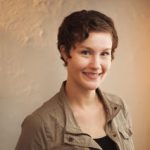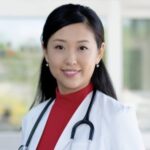Sleep-Related Movement Disorders
- Definition: Sleep-related movement disorders cause repetitive movements that may wake you from sleep throughout the night.
- Types: Common sleep-related movement disorders include restless legs syndrome, periodic limb movement disorder, sleep related rhythmic movement disorder, cramps, teeth grinding, benign sleep myoclonus of infancy, and propriospinal myoclonus at sleep onset.
- Diagnosis: You can be diagnosed with a sleep-related movement disorder by explaining your symptoms to a doctor or on a sleep study.
- Treatment: Treatment may include iron replacement, medications, and home remedies like massage, heat, cold, and stress management.
Most people move around in bed as they try to fall asleep, and have minimal movements after they drift off. But for people diagnosed with a sleep-related movement disorder, nighttime movements increase before or during sleep.
Sleep-related movement disorders are divided into different types, but many have similar methods for diagnosis and treatment. If you experience symptoms of these disorders, your doctor can work with you to find the cause, develop a treatment plan, and improve your sleep.
Overview of Sleep-Related Movement Disorders
Sleep-related movement disorders (SMRDs) are a category of sleep disorders involving repetitive movements that interfere with sleep. Movements during sleep with an SMRD can look like sudden jerks, leg cramps, head banging, and full-body movements. These disorders can be caused by low iron levels (anemia), nerve problems, or have no identifiable cause.
Often, doctors can diagnose sleep-related movement disorders with a description of your symptoms and medical history, but other times they may want to do a sleep study or get lab tests to check for iron levels. After managing any underlying conditions, treatment can involve medications, home remedies, and lifestyle changes.
Types of Sleep-Related Movement Disorders
The sleep-related movement disorder category includes several types of sleep disorders, including more common conditions like restless legs syndrome and periodic limb movement disorder, as well as rarer disorders like propriospinal myoclonus at sleep onset. These movements involve repetitive movements during sleep or while trying to fall asleep.
Restless Legs Syndrome
Restless legs syndrome (RLS) causes an irresistible urge to move your legs to relieve deep, uncomfortable pulling, crawling, or tingling sensations. It’s defined as a conscious and voluntary movement to relieve the sensations. RLS occurs in 5 to 15% of people In North American and European populations, but only 2 to 3% have symptoms that disrupt sleep. RLS can be caused by genetic factors, low iron levels, nerve problems in the legs, or an imbalance of dopamine, an important brain messenger.
Symptoms usually worsen in the evening or at night and improve with movement, which help distinguish RLS from other conditions.
Periodic Limb Movement Disorder
Periodic limb movement disorder (PLMD) causes repetitive, consistent, and uniform movements that happen most often in the legs. These movements usually last up to five seconds and can look like both feet flexing at the ankle or leg twitching or kicking. This happens every 20 to 40 seconds for a period of anywhere from 10 minutes to several hours, and many people don’t know it’s happening.
PLMD risk increases as you get older, and up to 57% of older adults have the disorder. Experts aren’t sure what causes PLMD, but it may be linked with low iron levels and blood pressure changes.
Sleep-Related Rhythmic Movement Disorder
Sleep-related rhythmic movement disorder (RMD) also describes repetitive movements that happen during periods of drowsiness or sleep, but unlike PLMD, these movements typically involve body rolling and rocking or head banging and rolling for up to 15 minutes. Some people with RMD also hum or make loud unintelligible sounds with their movements.
These movements are common in infants and children, but can also happen in adults. RMD may be a natural part of motor development in infants, but may also be caused by interrupted sleep, issues with the release of neurotransmitters, and genetic factors. In children, RMD usually fades by age 5, but when it persists into adulthood, it can be associated with insomnia, anxiety, or neurodevelopmental disorders.
Sleep-Related Leg Cramps
Sleep-related leg cramps are painful and happen when your calf or foot muscles suddenly contract for several seconds to minutes. These cramps often happen while you’re asleep and can wake you up throughout the night.
Some people only experience them every few years, while others can have many episodes a night. () As many as 60 percent of adults have sleep-related leg cramps, which may be caused by sitting too long during the day, some heart medications, and birth control.
Other possible triggers include but are not limited to dehydration, pregnancy, thyroid disorders and strenuous exercise. Gentle stretching before bed and maintaining hydration may help reduce frequency.
Sleep Related Bruxism
Sleep-related bruxism is the medical term for grinding your teeth while you sleep. Jaw muscle contractions during sleep can cause tooth wear and pain, jaw muscle pain, and headaches, and severe bruxism can disrupt sleep patterns.
Bruxism during sleep happens in 5 to 8% of the general population and often decreases with age. Common causes of sleep-related bruxism include alcohol use, snoring, caffeine, anxiety, stress, and medical conditions like obstructive sleep apnea.
Benign Sleep Myoclonus of Infancy
Benign sleep myoclonus of infancy (BSMI) is a rare sleep disorder which causes repetitive symmetrical muscle jerks in infants while they sleep. BSMI can cause movement in the whole body and may look like epilepsy (a seizure condition). But these movements only happen during sleep, usually resolve on their own by two or three months of age, and don’t cause damage.
Parents often mistake BSMI with seizures. A key difference is that seizures can happen during wakefulness, while BSMI stops immediately if the baby is woken up.
Propriospinal Myoclonus at Sleep Onset
Propriospinal myoclonus at sleep onset is characterized by jerking movement of the stomach, torso, and sometimes neck during the transition from wakefulness to sleep. These movements can make it difficult to fall asleep, and can lead to sleep anxiety and depression. When they’re very intense, the muscle jerks can even cause injury.
A rare disorder, experts don’t know how many people experience propriospinal myoclonus at sleep onset, but they believe it may be caused by issues with brain signals traveling along the spine.

Diagnosis and Treatment
To diagnose a sleep-related movement disorder, your doctor will do a physical examination and ask you about your symptoms, health conditions, medications, and family health history. Based on the patterns, timing, and characteristics of your movements, they can often pinpoint which movement disorder you have.
Blood tests can be used to check for low iron levels, and in some cases, you may need an overnight sleep study (polysomnography). With these tests, your doctor can observe your movements, rule out other sleep disorders, make the right diagnosis, and develop a treatment plan.
After other conditions are treated or ruled out, treatment of sleep-related movement disorders often depends on which one you have, but some typical treatments include:
- Iron replacement (oral or intravenous)
- Antiseizure medications
- Benzodiazepines
- Opioids
- Massage
- Heat or cold
- Good sleep hygiene
- Stress management
- Avoiding alcohol, caffeine, and nicotine
Many sleep-related movement disorders in children fade on their own without treatment. No matter your treatment plan, the goal is to keep you safe and help you sleep better.
When to See a Doctor
Getting enough quality sleep is vital for people of all ages. Losing sleep can affect our thoughts and emotions and increases the long-term risk of mental and physical health issues. Many people with sleep-related movement disorders experience insufficient and poor quality sleep, sometimes without understanding the cause of their symptoms. For this reason, it’s important for anyone with sleep-related concerns to talk to a doctor or sleep specialist.

Still have questions? Ask our community!
Join our Sleep Care Community — a trusted hub of sleep health professionals, product specialists, and people just like you. Whether you need expert sleep advice for your insomnia or you’re searching for the perfect mattress, we’ve got you covered. Get personalized guidance from the experts who know sleep best.
References
13 Sources
-
Sringean J, Radhakrishnan DM, Lean PL, Bhidayasiri R. Clinical approaches and managements of sleep-related movement disorders. International Review of Movement Disorders; 2024:361-438.
https://www.sciencedirect.com/science/article/abs/pii/S2666787824000346 -
Vaughn, B. V. (2024, June 11). Approach to abnormal movements and behaviors during sleep. UpToDate.
https://www.uptodate.com/contents/approach-to-abnormal-movements-and-behaviors-during-sleep -
Ondo, W. G. (2023, July 17). Clinical features and diagnosis of restless legs syndrome and periodic limb movement disorder in adults. UpToDate.
https://www.uptodate.com/contents/clinical-features-and-diagnosis-of-restless-legs-syndrome-and-periodic-limb-movement-disorder-in-adults -
Fong J, N. Foldvary-Schaefer. Periodic Limb Movements in Sleep (PLMS). Kaufman’s Clinical Neurology for Psychiatrists (Seventh Edition). Elsevier eBooks. Published online January 1, 2014:860-864.
-
Li, J., Moore, H., 4th, Lin, L., Young, T., Finn, L., Peppard, P. E., & Mignot, E. (2015). Association of low ferritin with PLM in the Wisconsin Sleep Cohort. Sleep Medicine, 16(11), 1413–1418.
https://pubmed.ncbi.nlm.nih.gov/26498245/ -
Lam N, Veeravigrom M. Sleep-related rhythmic movement disorder in children: a mini-review. Front Neurol. 2023;14:1165130. Published 2023 May 15. doi:10.3389/fneur.2023.1165130
https://pubmed.ncbi.nlm.nih.gov/37255722/ -
Allen RE, Kirby KA. Nocturnal Leg Cramps. American Family Physician. 2012;86(4):350-355.
https://www.aafp.org/pubs/afp/issues/2012/0815/p350.html -
Winkelman, John W., M.D. (2025, May 23). Nocturnal muscle cramps. UpToDate.
https://www.uptodate.com/contents/nocturnal-muscle-cramps -
Khoury S, Carra MC, Huynh N, Montplaisir J, Lavigne GJ. Sleep Bruxism-Tooth Grinding Prevalence, Characteristics and Familial Aggregation: A Large Cross-Sectional Survey and Polysomnographic Validation. Sleep. 2016;39(11):2049-2056. Published 2016 Nov 1. doi:10.5665/sleep.6242
https://pubmed.ncbi.nlm.nih.gov/27568807/ -
Gerstner, G. E. (2022, February 3). Sleep-related bruxism (tooth grinding). In A. F. Eichler (Ed.). UpToDate.
https://www.uptodate.com/contents/sleep-related-bruxism-tooth-grinding -
Wilfong, Angus, M.D. (2024, July 2). Nonepileptic paroxysmal disorders in neonates and infants. UpToDate.
-
Silber, M. H. (2024, June 14). Management of restless legs syndrome and periodic limb movement disorder in adults. UpToDate.
https://www.uptodate.com/contents/management-of-restless-legs-syndrome-and-periodic-limb-movement-disorder-in-adults -
National Heart, Lung, and Blood Institute. (2022, June 15). Sleep deprivation and deficiency: How sleep affects your health.
https://www.nhlbi.nih.gov/health/sleep-deprivation/health-effects

